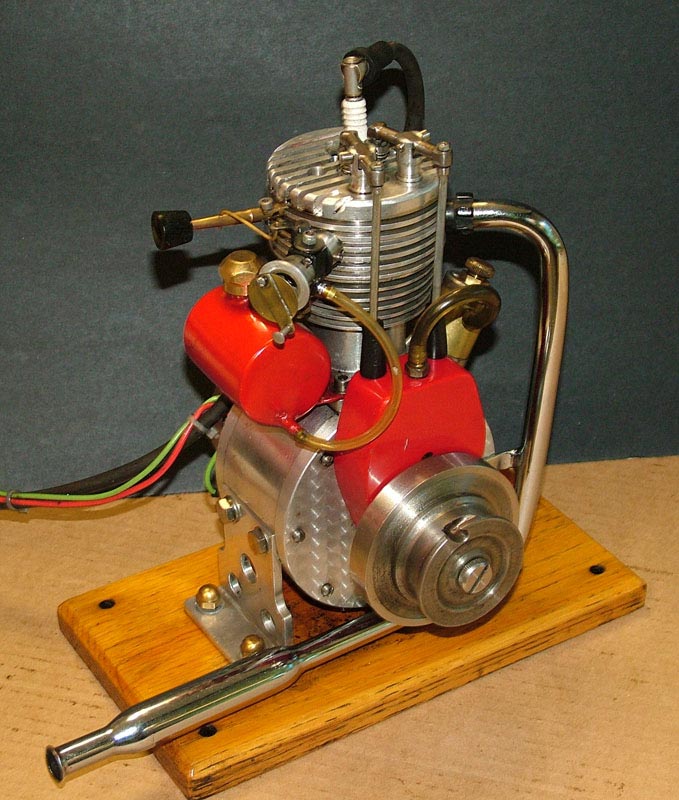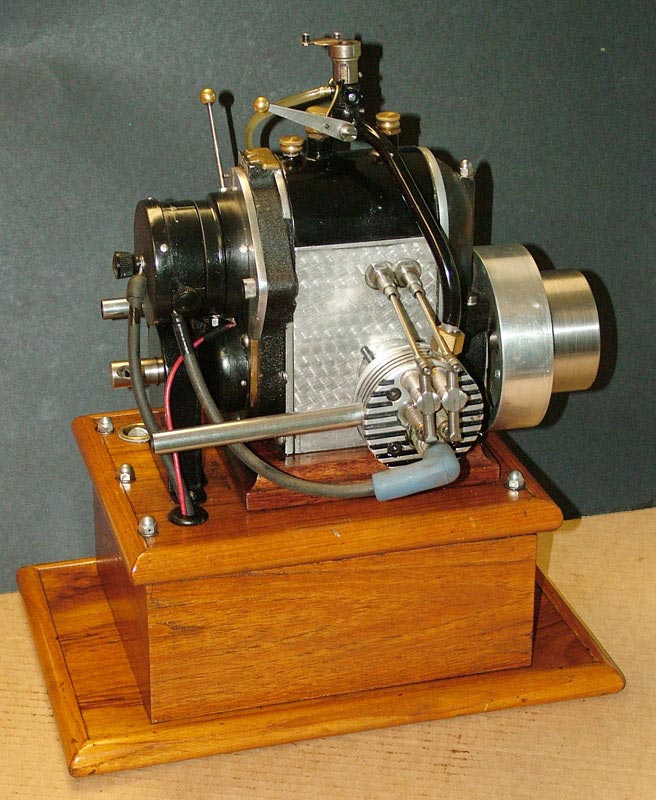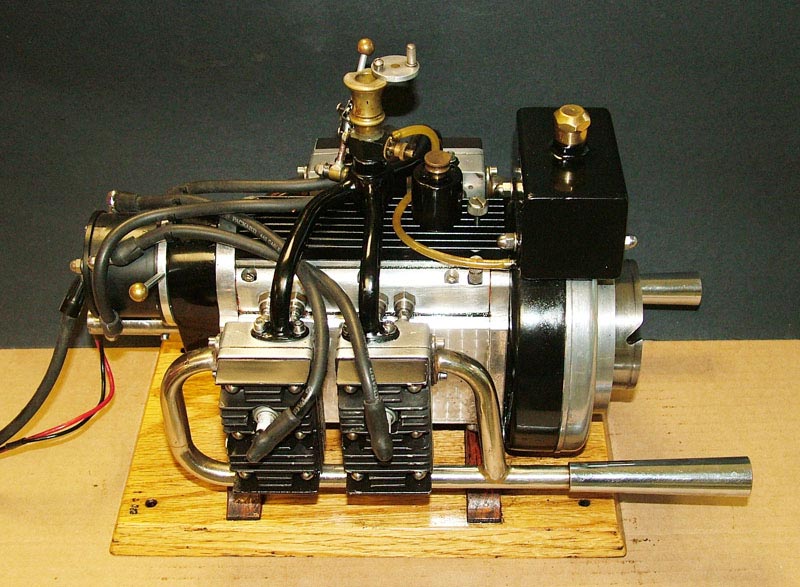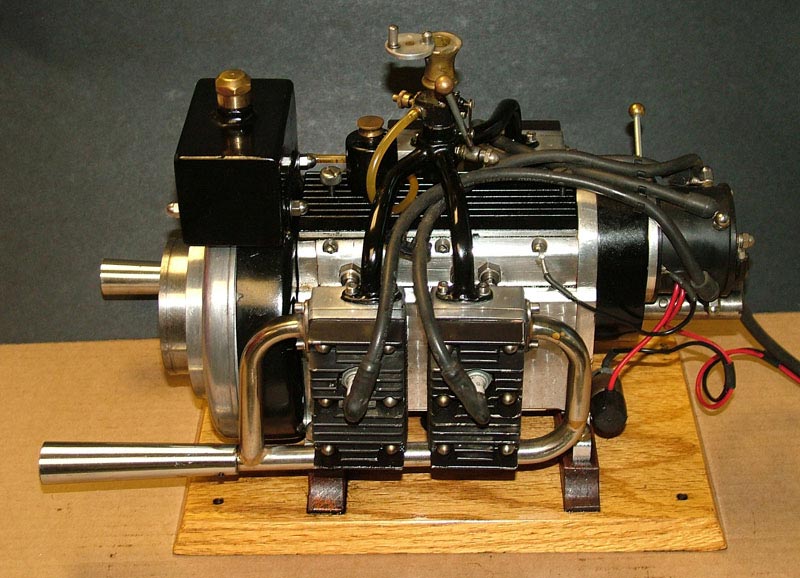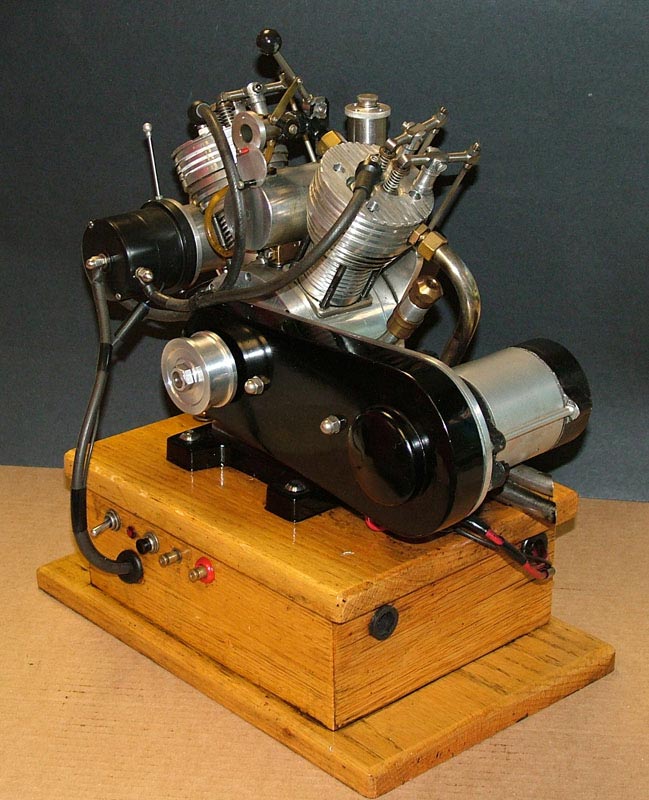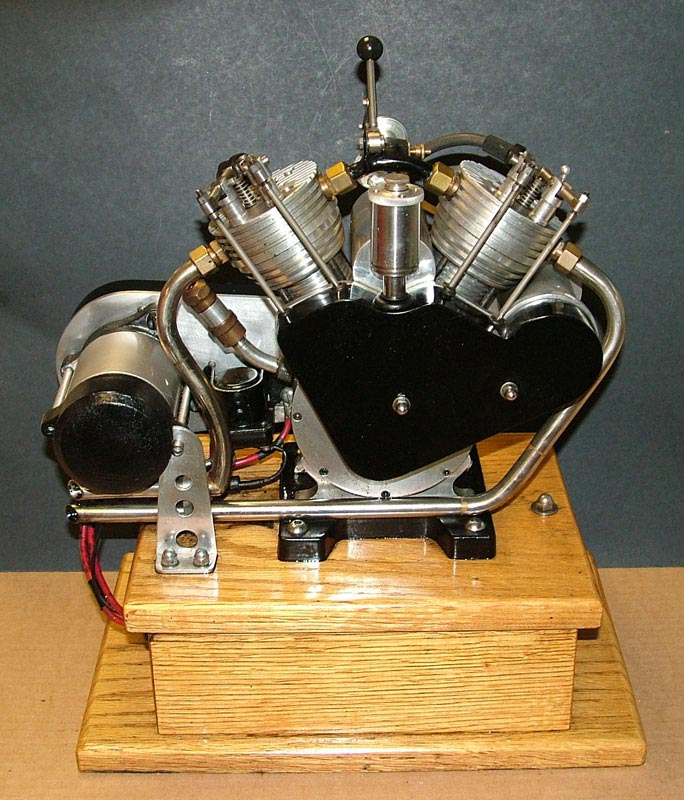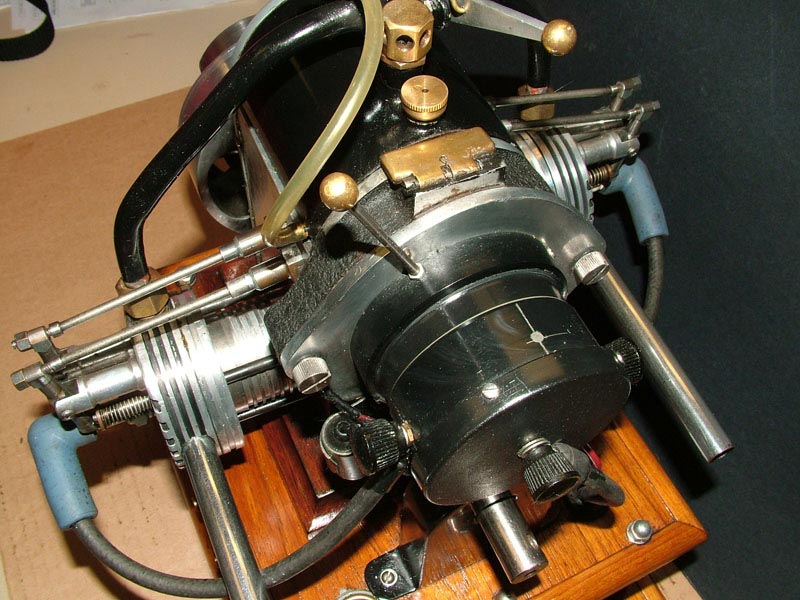1920—2011
A Variety of Small Engines Based on Popular Designs
A Late Start Still Ends With Great Results
It wasn’t until the age of 73 that Maurice Nysether first decided to build an engine. This may seem like a late start at machinist work; however, Maurice had a lifetime of experience with engines to guide him. Fifteen years later, Maurice had built over 20 scaled-down engines of his own. Some of them were sold, but Maurice kept 10 or 12 to bring to local shows, where he ran them enthusiastically.
In fact, we first saw Maurice’s work at the semi-annual Vista Antique Gas and Steam Engine Museum show. He had a table full of engines on display, all of which were running smoothly with nothing more than occasional lubrication.
Additionally, Maurice also restored an old 1917 Henderson straight four motorcycle engine that he had found. Interestingly, the old engine had been used for many years in a mine to run a circulation fan. Over the years, Maurice bought and worked on a number of old vehicles. He noted that, “Before they became collectible, you could get a Model T Ford, or an old Harley or Indian for $10.00 and fix them up.”
Four of Maurice Nysether’s favorite engines, which he brought to the Miniature Engineering Craftsmanship Museum for us to photograph.
Having ridden motorcycles since he was 15 years old, Maurice eventually purchased and restored a vintage motorcycle at age 55. He also rode and restored two Indian motorcycles that now reside at the Deer Park Auto Museum. Along with that, Maurice worked with turbocharged Corvairs and other types of vehicles over the course of his life. So, despite a lack of machining experience, he knew quite a lot about making engines run.
Now, most of the engines that Maurice built were based on existing engine configurations—but they are not exact copies. They share features with engines like a Harley V-twin, a BSA single, a Volkswagen flat four, or other popular motors. But they are not scale models. Maurice would start out with the concepts, and then design each piece on his own. All of his engines ran well, too.
This horizontal twin engine features a block made from a 1905 Bosche magneto, and a Perry model airplane carburetor. Maurice liked to repurpose existing parts, and use them in his engines whenever possible.
For all of his engine builds, Maurice used the same 1-1/8” bore, and 1-3/8″ stroke. He used hydraulic cylinders for cylinder liners to save time. Additionally, Maurice would regularly use other existing pieces where he could, to keep from having to reinvent the wheel each time. His shop included an old South Bend lathe, and a Taiwanese mill that was rescued from the scrap heap and reworked for his purposes.
Maurice also had an old Craftsman wood bandsaw that was re-geared to cut metal. Although he never had any prior training in machining, Maurice had a sound understanding of the tools at his disposal—and experience using them. With that foundation, he simply taught himself to cut metal through trial and error.
Maurice’s horizontally opposed, air-cooled, four-cylinder engine (like an older VW). It was machined from a billet aluminum block.
About Maurice
In 1951, Maurice graduated from USC with a Bachelors Degree in Trade and Transportation. This led to a job with Union Oil Company, where he worked for 26 years. Maurice was the Coordinator of Production and Distribution for tires, batteries, and accessories. Though he did not graduate from flight school as a pilot during WWII, Maurice did serve as a bombardier aboard a B-17 in Europe.
He was able to rekindle his love of flying many years later, when he got the opportunity to log 14 hours of solo flight time in a friend’s Cessna. However, Maurice’s flying career was short-lived as his friend sold the plane shortly after.
This 60° OHV V-twin engine is based on a 1936 Harley 61 motor. (The original Harley had a 45° “V” configuration.) The starter is actually from a small motorcycle.
During WWII, Maurice was part of the crew on the B-17, Sleepytime Gal in Europe. Many years later, he was still active with this old group, dubbed the 385 Bomb Group. The 385 Bomb Group hosts a museum in Perlé, Luxembourg which is dedicated to the crews of two B-17’s that crashed in the area during the war.
Maurice also contributed to a number of exhibits at the museum. He donated old uniforms as well as a restored Curtiss-Wright “Cyclone” engine, just like the one that powered the B-17 bombers.
Before passing, Maurice brought four of his engines to the Craftsmanship Museum when he came by for a tour. We took the opportunity to photograph them, and to learn a little more about Mr. Nysether. At the time, he was 90 years old and still working on his beautiful running engines.
We regret to announce that Mr. Nysether passed away in March, 2011. We thank him for his service to our country during WWII, and for his dedication to scale engine building.



